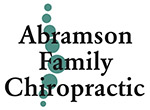Weekly Updates
Managing Low Back Pain
According to a study the included 32 patients with low back pain, a treatment plan that includes stabilization exercises, patient education, and manual therapies—an approach commonly used by doctors of chiropractic—is effective for improving range of motion in lumbar spine and reducing low back-related pain, pain sensitivity, and disability. Journal of Back and Musculoskeletal Rehabilitation,…
Read MoreManaging Cervicogenic Dizziness
A systematic review and meta-analysis that included 13 studies concluded that the combination of exercise therapy and manual therapy—an approach commonly used by doctors of chiropractic—is effective for managing dizziness that originates from dysfunction in the cervical spine. Journal of Manual & Manipulative Therapy, October 2022 Common Pain Relievers May Make Arthritic Knees Worse An…
Read MoreAnkle Joint Mobilization Improves Motion and Balance
A systematic review and metaanalysis that included nine studies concluded that ankle joint mobilization—a treatment provided by doctors of chiropractic—is an effective intervention for improving dorsiflexion range of motion and dynamic balance in patients with chronic ankle instability. Journal of Functional Morphology and Kinesiology, September 2022 Bacteria Cause 1 in 8 Deaths Worldwide In 2019,…
Read MoreManual Therapies Helps Patients with Non-Specific Low Back Pain
A systematic review that included 30 randomized-controlled trials concluded that manual therapies—such as spinal manipulation, the primary form of treatment used by doctors of chiropractic—are an effective treatment option for patients with non-specific low back pain, or low back pain with no underlying disease or pathology, like an infection or osteoporotic fracture. Cureus, August 2022…
Read MoreMobilization Helps Knee Osteoarthritis Patients
In this study, researchers observed that Maitland mobilization—a manual therapy provided by doctors of chiropractic—is an effective intervention for improving pain and function in patients with osteoarthritis of the knee. European Journal of Physical and Rehabilitative Medicine, October 2022 Common Atrial Fibrillation Treatment Appears Riskier for Women Ablation is a surgical procedure that creates scarring…
Read MoreManual Therapies for Post-Operative Elbow Stiffness
For patients with post-operative elbow stiffness, a recent study found that both instrument-assisted soft tissue mobilization and muscle energy technique are effective interventions for improving pain intensity, range of motion, and function. Doctors of chiropractic utilize these and other manual therapies when managing musculoskeletal disorders of the elbow and other areas of the body. Journal…
Read MoreManual Therapies Benefit Patients with a Lateral Ankle Sprain
A systematic review of data from three randomized-controlled studies concluded that a combination of manual therapies and specific exercises is more effective for improving range of motion, pain, and function in patients with an acute lateral ankle sprain than specific exercises alone. Doctors of chiropractic often use such an approach when managing an acute lateral…
Read MoreManual Therapy Combo Benefits Migraine Patients
Among a group of 75 migraine headache patients, those treated with a combination of soft tissue and articular manual therapies experienced greater improvements in migraine pain and duration than those who received either soft tissue or articular manual therapy alone. Doctors of chiropractic often use these and other manual therapies when managing patients with a…
Read MoreKeep the Wrist Neutral When Using Power Tools
According to a recent study, using power tools with a non-neutral wrist position can increase pressure on the median nerve, elevating one’s risk for carpal tunnel syndrome. The findings highlight the importance of avoiding prolonged flexed and extended wrist postures when carrying out work and leisure activities. International Journal of Occupational Safety and Ergonomics, September…
Read MoreBack Pain Risk Factors in Kids
Interviews with 401 fifth grade students revealed that 182 experienced back pain within the previous three months. Further analysis show that the following are risk factors among students in this age group for developing back pain: watching television more than six hours a day; lifting heavy objects with poor posture; using a non-standard, two strap…
Read More









